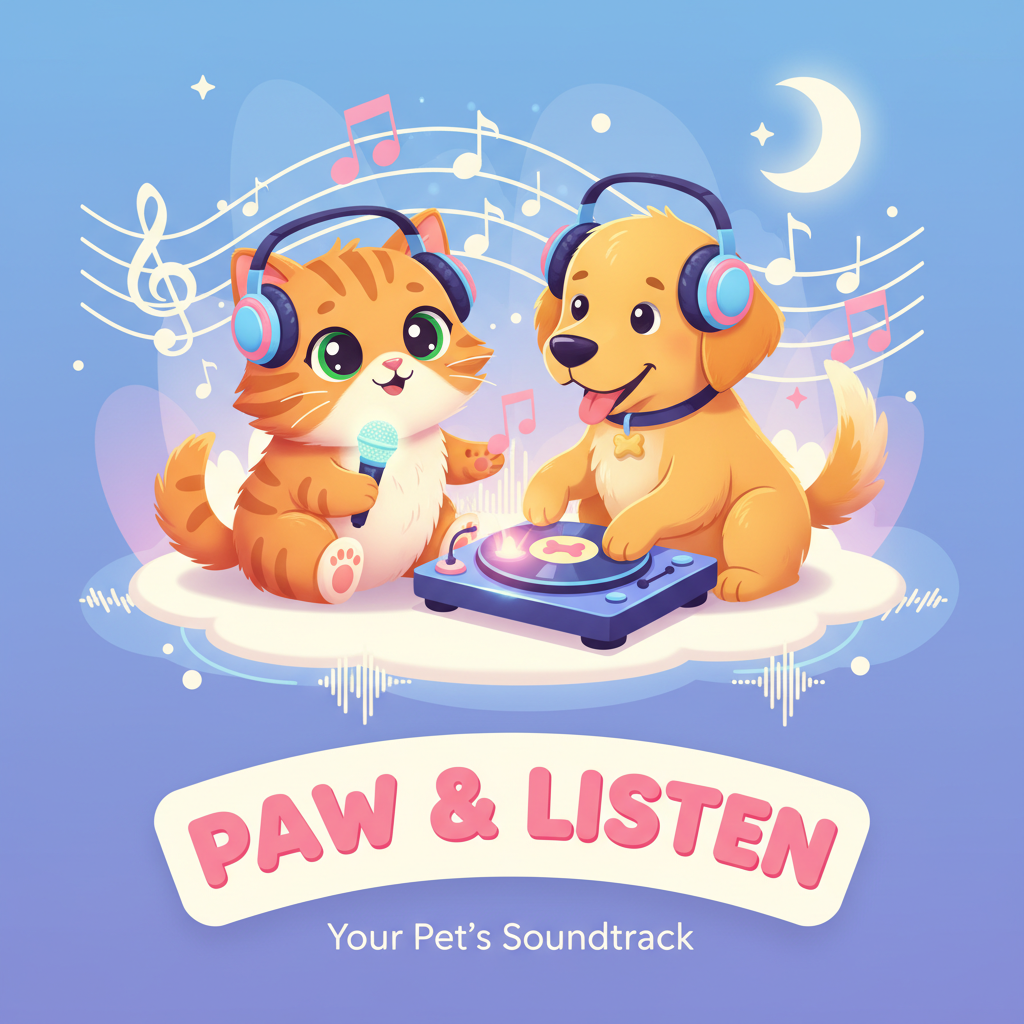Playlists
Explore our calming playlists and grab the app for the best experience.
Get the App
Playlists
Hover over an icon to reveal the playlist link, then click to open.
Why Music for Pets?
Calming, simple sound can help pets cope with modern sensory overload and improve rest.
- Reduce anxiety and stress responses
- Promote healthier rest and recovery
- Encourage calmer behaviors at home
How Our Music Works
We use gentle tempos, predictable structures, and controlled dynamics. Minimal high-frequency spikes and balanced low-end help reduce stress responses.
- Slow, steady BPM to encourage relaxation
- Warm harmonic palettes for a comforting tone
- Reduced transient peaks to avoid startle responses
What’s Psychoacoustics
Psychoacoustics explores how sound affects the nervous system. Our music applies “simple sound” principles to reduce auditory demand and encourage calm, especially for over-stimulated pets.
- Simple Sound reduces auditory load by minimizing melodic and harmonic complexity, shifting from active listening to passive hearing.
- Lower orchestral density (solo piano, small ensembles) is easier to process and typically more relaxing for dogs.
- Resonance (tone) and entrainment (rhythm) gently support desired mind/body states, fostering steady, calm behavior.
- Practical guidance: observe your pet’s arousal; adjust tempo and tracks; switch or stop if agitation appears.
Related Research
Evidence indicates that thoughtfully arranged music can reduce arousal and support calmer behavior in dogs, with genre, tempo, and harmonic simplicity playing key roles. Findings span kennels, veterinary settings, and home environments.
- Classical music correlates with reduced barking and more resting in shelters; heavy metal increases agitation. [0]
- Psychoacoustic design (tempo, passive-hearing focus) links to calmer canine responses. [0]
- Lower orchestral density (e.g., solo piano) is easier to process and often more soothing. [0]
- Audiobooks and clinical environments show behavior changes and owner satisfaction shifts. [0]
Contact
Have questions or need support? We're here to help.


